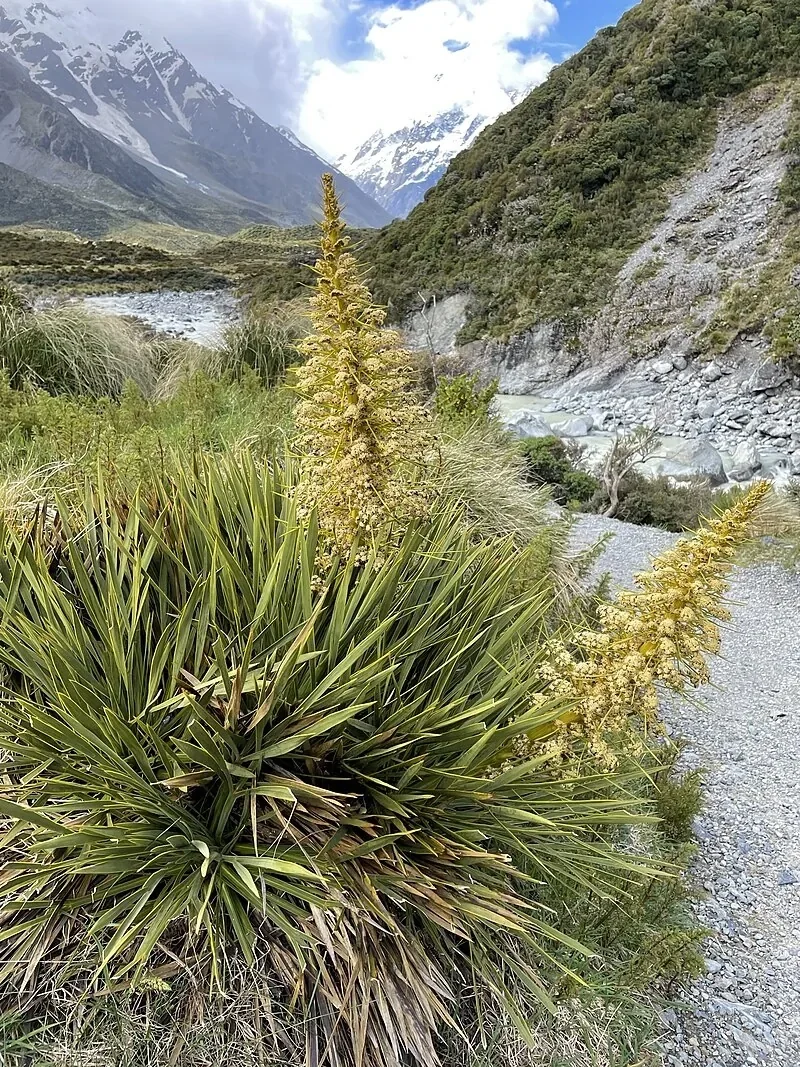
Tātoki
Alectryon excelsus
Introduction
Essential Information
Tātoki ( Alectryon excelsus ) is a handsome, medium-sized native tree found in lowland forests throughout New Zealand-s North Island and parts of the South Island. It is known for its glossy, dark green leaves, rough bark, and clusters of bright red fruit with shiny black seeds. Tātoki is valued for its ornamental beauty, wildlife habitat, and cultural uses. Learn more about native trees .

Plant Description
Botanical Features
Tātoki ( Alectryon excelsus ) is a distinctive native plant with unique botanical characteristics that make it well-suited to New Zealand's diverse environments. This species exhibits typical features of its genus and family, with specialized adaptations that allow it to thrive in its natural habitat. The plant 's morphological features, including its leaf structure, growth habit, and reproductive characteristics, reflect millions of years of evolution in New Zealand's isolated environment. Understanding the botanical description of Tātoki helps gardeners appreciate its unique characteristics and provides insight into its cultivation requirements and ecological role.
Quick Facts
Key Features
| Scientific Name | Alectryon Excelsus |
|---|---|
| Height | 7-12 m (occasionally up to 15 m) |
| Spread | 4-8 m |
| Water Needs | Moderate; prefers moist, well-drained soil |
| Light | Full sun to part shade |
| Frost Tolerance | Low; young trees are frost tender |
| Salt Tolerance | Moderate; tolerates coastal conditions |
| Growth Rate | Moderate |
| Lifespan | Long-lived (over 100 years) |
Climate Best Suited to
Preferred Conditions
| City | Suitability |
|---|---|
| Whangārei | Ideal |
| Auckland | Ideal |
| Hamilton | Ideal |
| Tauranga | Ideal |
| Rotorua | Ideal |
| Gisborne | Ideal |
| New Plymouth | Ideal |
| Napier | Ideal |
| Whanganui | Ideal |
| Palmerston North | Ideal |
| Wellington | Ideal |
| Nelson | Ideal |
| Christchurch | Ideal |
| Dunedin | Ideal |
| Invercargill | Ideal |
Tātoki thrives in warm, temperate climates typical of the North Island and northern South Island. It prefers sheltered sites with protection from strong winds and frost, and tolerates coastal conditions well.
Natural Habitat
Typical Environments
Alectryon is naturally found in specific habitats throughout New Zealand. Understanding its natural environment helps in providing appropriate growing conditions in cultivation.
Plant Conservation
While Tātoki ( Alectryon excelsus ) is not currently classified as a threatened species, its populations face challenges primarily from habitat loss and the impact of introduced pests such as possums, rats, and stoats. These pests can damage trees and consume seeds, hindering natural regeneration.
Conservation efforts for Tātoki focus on protecting and restoring its natural habitats, particularly lowland forests and coastal areas. This includes controlling introduced pest populations through trapping and baiting programs. Additionally, Tātoki is actively propagated and planted in restoration projects to increase its numbers and genetic diversity. The New Zealand Department of Conservation and various plant conservation networks are involved in these efforts to ensure the long-term survival of this important native tree.
Soil Requirements
Well-drained, fertile soils preferred.
Light Requirements
Full sun to part shade.
Water Requirements
Moderate watering during establishment.
This section details the soil, water, light, and climate preferences for cultivation. ensures successful cultivation. This plant adapts well to various conditions once established.
Planting Guide
Site Preparation
- Choose a sheltered site with well-draining soil.
- Dig a hole twice as wide and as deep as the root ball.
- Mix compost into the soil to improve fertility.
- Place the tree in the hole and backfill, firming the soil gently.
- Water thoroughly after planting and mulch around the base.
- Stake young trees if exposed to wind.
Ecological Role
Wildlife Interactions
Alectryon excelsus , commonly known as Tītoki, plays several significant ecological roles within New Zealand's ecosystems. Tītoki is a crucial component of New Zealand's lowland forests, contributing to their structure and stability. It thrives in coastal and lowland forest environments, particularly in moist areas and on alluvial soils. The bright red fruit of the Tītoki tree is a vital food source for numerous native birds, including tūī, bellbird, kererū (native wood pigeon), silvereye, and the endangered stitchbird. The seeds, encased in a fleshy red aril, are dispersed by these birds, aiding in the tree's propagation. Beyond providing food, Tītoki trees offer habitat for a variety of native birds and insects. Tītoki contributes to mitigating soil erosion, particularly in marginal land areas, and helps protect the soil. It also plays a role in carbon sequestration. Birds such as tūī and silvereye are attracted to the nectar-rich flowers of Tītoki, thereby assisting in the tree's pollination. While beneficial to many species, Tītoki also interacts with herbivores and pests; possums and birds consume its fruit, various insects feed on its bark and leaves, deer browse on young trees, and the tītoki fruit borer can destroy its seeds.
Uses and Significance
Garden Uses
- Specimen tree
This native plant serves multiple purposes in gardens and landscapes. It provides habitat for wildlife, stabilizes soil, and adds aesthetic value.
Landscaping Uses
Practical Applications
Alectryon is highly valued in landscaping for its aesthetic appeal and practical benefits. It can be used in various garden styles and landscape applications.
Seasonal Care
Spring
- Apply mulch
Summer
- Water during dry spells
Autumn
- Collect seeds
Winter
- Protect from frost
Each season brings different care requirements for Alectryon. Understanding these seasonal needs helps ensure the plant thrives throughout the year and maintains its health and appearance.
Adapting care practices to seasonal changes also helps the plant develop natural resilience and reduces the need for intensive maintenance. This approach supports sustainable gardening practices.
Pruning
Pruning Techniques
Prune tātoki in late winter or early spring to remove dead or damaged branches and to shape the tree. Minimal pruning is needed once established. Avoid heavy pruning as it can stress the tree.
How to Grow Tātoki
Seeds
Fresh seed propagation is the most reliable and widely used method for growing Tātoki, though timing is crucial for success. Seeds are only available fresh for a brief period each year from July to October when the distinctive bright red and black fruits ripen. The glossy black seed is enclosed within a bright red fleshy coat inside a woody capsule, and all three forms may be found when collecting from the ground. The presence of the bright red fleshy coat indicates seed maturity and viability. Seeds are highly perishable and cannot be stored, requiring immediate sowing upon collection or receipt. To prepare seeds, soak the woody capsule in water to soften it enough to break open and reveal the seed inside. Remove the fleshy red coating completely and sow the black seed immediately in quality seed-raising mix, covering with approximately 5mm of growing medium. Fresh seeds germinate readily without any pre-treatment, typically sprouting within 2-6 weeks under suitable conditions. Maintain consistently moist but well-draining conditions throughout germination, and provide protection from frost as young seedlings are frost-tender. Once established, seedlings grow quickly under suitable conditions and can be transplanted when they reach 15-20cm in height and have developed a strong root system.
Cuttings
While cutting propagation of Tātoki is possible, it is significantly less reliable than seed propagation and requires more specialized techniques and conditions. Semi-hardwood cuttings taken during late summer to early autumn tend to have the highest success rates, though overall success remains variable. Select healthy, current-season growth that is beginning to firm up but not fully hardened, cutting 10-15cm lengths just below a node. Remove the lower leaves while retaining 2-3 pairs at the tip, and treat the cut end with a strong rooting hormone containing both auxins and fungicides. Insert cuttings into a well-draining propagation mix of equal parts peat moss and perlite, ensuring at least two nodes are buried. Place in a humid environment with bottom heat around 20-25°C and bright, indirect light. Cover with a clear dome or place in a misting system to maintain high humidity levels. Rooting, when successful, typically takes 8-16 weeks, and not all cuttings will develop roots. Even those that do root may have lower survival rates during the acclimatization process. This method is primarily used by commercial propagators when seed is not available or when trying to maintain specific genetic characteristics, but for most growers, seed propagation remains the preferred approach due to its higher reliability and ease of execution.
Transplanting and Establishment
Successful establishment of young Tātoki plants requires attention to site selection and initial care, though the species is generally adaptable once properly established. Choose a location with fertile, well-drained soil that receives full sun to partial shade, ideally mimicking the tree's natural preference for riverbank terraces and alluvial soils. The site should be sheltered from strong winds, particularly during the establishment phase when young trees are most vulnerable. Plant in spring or early autumn when soil temperatures are moderate and rainfall is adequate for root development. Dig planting holes twice the width of the root ball but no deeper, ensuring the root collar sits at soil level to prevent stem rot. Backfill with the original soil, firming gently to eliminate air pockets while avoiding compaction. Water thoroughly after planting and apply a 5-10cm layer of organic mulch around the base, keeping it away from the trunk to prevent pest and disease issues. Provide regular watering during the first growing season, particularly during dry spells, as consistent moisture promotes rapid establishment. Young Tātoki trees grow quickly under suitable conditions and typically require minimal additional care once the root system is well-established, usually within 12-18 months of planting.
Pests and Diseases
Common Pests
Alectryon is generally resistant to most pests due to its native adaptations. However, it may occasionally be affected by common garden pests such as aphids or aphids or scale insects.
Disease Prevention
To prevent diseases, ensure good air circulation around Alectryon and avoid overwatering.\n Remove any diseased plant material promptly to prevent spread.
Cultural Significance
Traditional Uses and Values
Tātoki holds significant cultural value for Māori. The oil extracted from the seeds was highly prized and used for cosmetic and medicinal purposes, particularly as a skin moisturizer and for anointing the body. The hard, durable wood was also used for making various tools and implements.
Bonus Tip
Expert Growing Advice
The name 'Alectryon' comes from the Greek word for 'rooster'. It's thought that this name was given to the tree because of the resemblance of the bright red fruit to a rooster's comb.







